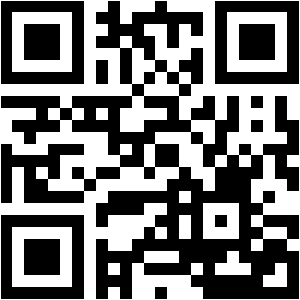| University | Massey High School |
| Subject | Geographic |
Conduct Geographic Research with consultation 2025
Achievement Criteria
| Achievement | Achievement with Merit | Achievement with Excellence |
| · Conduct geographic research with consultation. | · Conduct in-depth geographic research with consultation. | · Conduct comprehensive geographic research with consultation. |
Explanatory Notes
1. This achievement standard is derived from the Level 8 Geography Achievement Objectives of the Social Sciences learning area of The New Zealand Curriculum, Ministry of Education, Learning Media, 2007, and is related to the material in the Teaching and Learning Guide for Geography, Ministry of Education, 2010 at http://seniorsecondary.tki.org.nz. This standard is also derived from Te Marautanga o Aotearoa. For details of Te Marautanga o Aotearoa achievement objectives to which this standard relates, see the Papa Whakaako for the relevant learning area.
2. Conduct geographic research with consultation involves:
- identifying the aim of the research
- planning the research
- collecting and recording data relevant to the aim of the research
- presenting a map(s) and statistical and/or visual data
- analysing findings
- providing a conclusion(s) that relates to the aim of the research
- providing an evaluation of the research process, and how this affects the validity of the research findings.
Conduct in-depth geographic research with consultation involves:
- effectively presenting a map(s) and statistical and visual data
- analysing findings, in detail
- providing a conclusion(s), in detail, that relates to the aim of the research
- evaluating in detail the research process and how this affects the validity of the research findings and/or conclusions.
Conduct comprehensive geographic research with consultation involves:
- critically analysing findings
- critically evaluating the research process by building on the detailed evaluation through a discussion of alternative research methods and their implications.
3. Geographic research refers to any fieldwork activity that has a spatial component, and that considers aspects of a natural or cultural environment, and/or the interaction of people with that environment.
4. With consultation means students will develop their own research aim(s) and research methodology and initiate discussion of these with their teacher.
5. Data includes primary and secondary data.
- Primary data is collected from the field. The collection of data may be done individually or by a group. The collection of primary data includes a combination of the following methods: observing, measuring, précis sketching, photographing, surveying, using questionnaires, interviewing.
- Secondary data may also be included but the main focus of the research is on the primary data collected.
Assessment conditions: This assessment is open book.
You may work with others to collect and share primary data but the presentation, analysis and evaluation must be your own work. You will sign an authenticity statement at the end of the assessment to confirm this.
Aim: To answer a research question by collecting, presenting, and explaining data, referring to geographic concepts and evaluating the research process.
There are 3 main parts broken into 7 tasks in this Achievement Standard; all must be completed. Some of the tasks will be completed in class but some must be done in your own time.
IMPORTANT NOTE: You are expected to integrate relevant geographic terminology and concepts throughout your research where appropriate.
Stuck! Do not Know Assessment Answers?
Hire NZ Native Experts 24/7.
PART 1
- Identifying the aim of the research: Choose a question or hypothesis that is related to Geography. It must have a spatial component and be connected with people and the environment.
- Planning the Research: This can be done individually or in groups of 2 or more. You must decide what data you will need to collect and how you will collect it.
PART 2
- Collecting and recording data relevant to the aim of the research
- Presenting the data in 2-3 different ways (2 for achieved, 3 for merit – which is the highest mark for this section). These must include at least one map plus statistical presentation(s) (eg graphs, calculations, tables), and/or visual data (eg graphs, annotated photos). Appropriate conventions must be used for each presentation method FACKTS.
- Critically analysing findings: Write about the findings shown by the data presented in each of your presentation methods. This involves an examination of the data findings, identifying factors or circumstances that may have influenced them, identifying and examining any irregularities in the findings, examining any relationships that appear. You must go into detail. This means using specific information from the findings such as numbers, locations, names etc.
- Conclusion: Provides a conclusion(s), in detail that relates to the aim of the research.
PART 3
- Critically evaluate the research process by describing the strengths and weaknesses of how you carried out your research, and examine how this affected the validity of your findings. Then discuss alternative methods that you could have used in the research process in order to improve it, explaining why they would have been better.
Examples of possible research topics
Choose the 3 most interesting topics/brain storm ideas, complete the table below:
| Hypothesis or question | I found this interesting because | What I already know about the topic | Some data or information I could collect about the topic |
| Does where students live change how they get to school? | Some people live close but still get dropped off. Others live far but take bus or walk. I want to know if distance really matter. | There are a lot of ways to get to Massey like walking, bus or car. Some students live really far away. | |
My chosen topic of interest is:
My question/hypothesis about this topic is:
- Ask a question OR make a statement that you are going to accept or reject at the end of your research (e.g. a hypothesis)
- Keep your question or hypothesis straight-forward/simple (one major idea/angle)
- Pose a question or hypothesis you CAN actually answer by doing fieldwork to collect data.
PART 1
(A) Identifying the aim of the research:
Choose a question or hypothesis that is related to Geography.
It must have a spatial component and be connected with people and the environment.
| My aim is: |
Checkpoint: Approved by teacher: _______________________________
(B) Planning the Research:
This can be done individually or in a small group. You must decide what data you will need to collect and how, where and when you will collect it.
| Primary data I will need to collect | How when and where I will collect it |
| Secondary data I will need to collect | How when and where I will collect it |
Buy Custom Assignment & Homework Solutions
Pay to NZ Native Writers | Cheap Cost & Plag Free
PART 2
(C) Collecting and recording the primary data:
Save all of the (rough) data you collect as you need to submit it also as proof of collection.
Write your data into the tables provided or attach it to these pages.
| Type of data being collected. | Location of data collection | Time and date(s) of data collection | Name(s) of student(s) responsible for data collection |
Were there any circumstances or conditions that affected your data collection process?
Might this have affected the accuracy or validity of the data that you collected?
|
You may use this table to record your data |
|||
(D) Presenting the data collected
Drawing graphs
| Using photos |
| Drawing diagrams |
| Drawing maps |
You should process and present your primary data using at least 3 different techniques that are appropriate for the data you have collected.
All your graphs/maps must be drawn to accepted geographic conventions: Title, labels, even axes, key, frame (maps), annotation, captions, colour.
Presentation techniques: Check in your skills workbook for ideas about which methods would suit your data best. You may need to process the data before you can present it ie. Calculate totals, range, average, percentages etc. You should show your working and explain how/why the data has been processed.
You should consult with your teacher if you are unsure about how to process or present the data.
Drawing maps – you must present your data on a map
- Choose an appropriate type of map to show your data
- FACKTS – all maps must have a Frame, Accuracy, Colour, Key, Title and a scale
- Choropleth maps can visually show patterns
- Maps can be annotated with text boxes explaining the data being presented
- Flow maps can show movement and interaction.
- Proportional symbols can help visually compare amounts in different locations.
Drawing graphs and diagrams
- Choose an appropriate type of graph or diagram to communicate your data effectively
- Use the correct graphing conventions and be accurate
- Line graphs can present changes over time
- Bar graphs and histograms present discrete amounts of a variable
- Pie charts present % effectively
- Scatter graphs can show the relationship between two variables
- Graphs can be annotated to draw attention to patterns or relationships
Taking and presenting photographs
- Take and include photos that add information; show relationships or patterns about the topic
- Annotate the images with text boxes explaining what each photo shows about the data /topic
- Each photo should have a title and its date/time and location.
- Ensure the photos presented are of good quality.
(E) Critically analysing findings:
Examine the findings shown in each presentation method. Identify factors or circumstances that may have influenced the data, identify and examine any irregularities in the findings and examine any relationships that appear.
You must go into detail. This means using specific information from the findings such as numbers, locations, names etc.
(F) Conclusion:
Provide a conclusion(s), in detail, that relates to the aim of the research; ie. To what extent does the data support the hypothesis / what is the answer to the original research question?
PART 3
(G) Describe the strengths and weaknesses of the research process, and examine how they have affected the validity of the findings.
Then discuss alternative methods that could have used in the research process in order to improve it, explaining why they would have been better.
(1) Research process strengths and weaknesses and an examination of how they have affected the validity of my findings.
2) Alternative methods that I could have taken and their implications
In quest for a professional assignment help?
Flexible rates compatible with everyone’s budget
Many students in New Zealand find geography research projects challenging because they involve primary data collection, map presentation, and critical evaluation of findings. If tasks like applying geographic concepts or analysing relationships seem overwhelming, expert guidance can make your work easier. Our team at New Zealand Assignment Help provides geography assignment help, offering 100% plagiarism-free, AI-free solutions aligned with assignment help experts NZ
- LAWS390 Business Law for Māori Organisations Essay | VUW New Zealand
- Nursing Assignment 3 : Factors that Impact Registered Nurses’ Ability to Influence National Government Health Policy
- The Management and Behaviour or Pregnant Sows on Pasture Assignment 1 | Massey University (MU)
- HAS 962 Occupational Hygiene: Measurement Assessment 4 AIOH Technical Report | UOW
- IT00143 Install & Optimize Software Applications Assignment | Pacific Polytech
- Digital Tourism and Hospitality Assignment Report | Auckland University of Technology
- HEAL840 Critical Enquiry for Evidence Based Practice Additional Assessment Opportunity (AAO) Semester 1 2025
- RES903 Research Dissertation Assessment One | Nelson Marlborough Institute of Technology (NMIT)
- 71338 Managing Change Assessment 3 Strategy and Implementation Report | Open Polytechnic
- BSRV4601 Fundamentals Real Estate Assignment 1: Eligibility and licensing | Open Polytechnic (OP)


